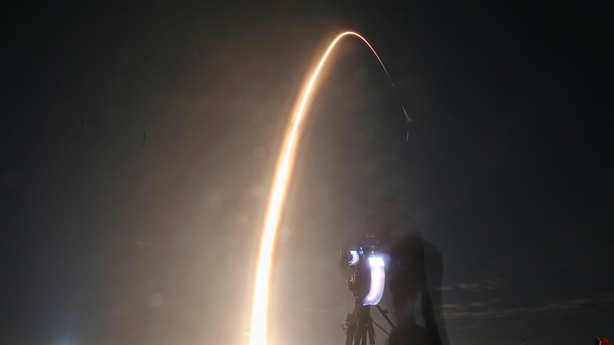Private spacecraft completes historic Moon landing

A spacecraft built and flown by Texas-based company Intuitive Machines has landed near the south pole of the moon, the first US touchdown on the lunar surface in more than half a century and the first ever achieved by the private sector.
The uncrewed six-legged robot lander, dubbed Odysseus, touched down at about 6.23pm EST (11.23pm Irish time), the company and NASA commentators said in a joint webcast of the landing from Intuitive Machines’ mission operations centre in Houston.
The landing capped a nail-biting final approach and descent in which a problem surfaced with the spacecraft’s autonomous navigation system that required engineers on the ground to employ an untested work-around at the 11th hour.
It also took some time after an anticipated radio blackout to re-establish communications with the spacecraft and determine its fate some 384,000km from Earth.

When contact was finally renewed, the signal was faint, confirming that the lander had touched down but leaving mission control immediately uncertain as to the precise condition and position of the vehicle, according to the webcast.
“Our equipment is on the surface of the moon, and we are transmitting, so congratulations IM team,” Intuitive Machines Mission director Tim Crain was heard telling the operations centre.
“We’ll see what more we can get from that.”
NASA Administrator Bill Nelson immediately hailed the feat as a “triumph,” saying, “Odysseus has taken the moon.”
The landing represented the first controlled descent to the lunar surface by a US spacecraft since Apollo 17 in 1972, when NASA’s last crewed moon mission landed there with astronauts Gene Cernan and Harrison Schmitt.
To date, spacecraft from just four other countries have ever landed on the moon, the former Soviet Union, China, India and, just last month, Japan.
The United States is the only one ever to have sent humans to the lunar surface.
Odysseus is carrying a suite of scientific instruments and technology demonstrations for NASA and several commercial customers designed to operate for seven days on solar energy before the sun sets over the polar landing site.

The NASA payload will focus on collecting data on space weather interactions with the moon’s surface, radio astronomy and other aspects of the lunar environment for future landers and NASA’s planned return of astronauts later in the decade.
Dawn of Artemis
The arrival of Odysseus also marks the first “soft landing” on the moon ever by a commercially manufactured and operated vehicle and the first under NASA’s Artemis lunar program, as the US races to return astronauts to Earth’s natural satellite before China lands its own crewed spacecraft there.
NASA aims to land its first crewed Artemis in late 2026 as part of long-term, sustained lunar exploration and a stepping stone toward eventual human flights to Mars.
A host of small landers like Odysseus are expected to pave the way under NASA’s Commercial Lunar Payload Services (CLPS) program, designed to deliver instruments and hardware to the moon at lower costs than the US space agency’s traditional method of building and launching those vehicles itself.





